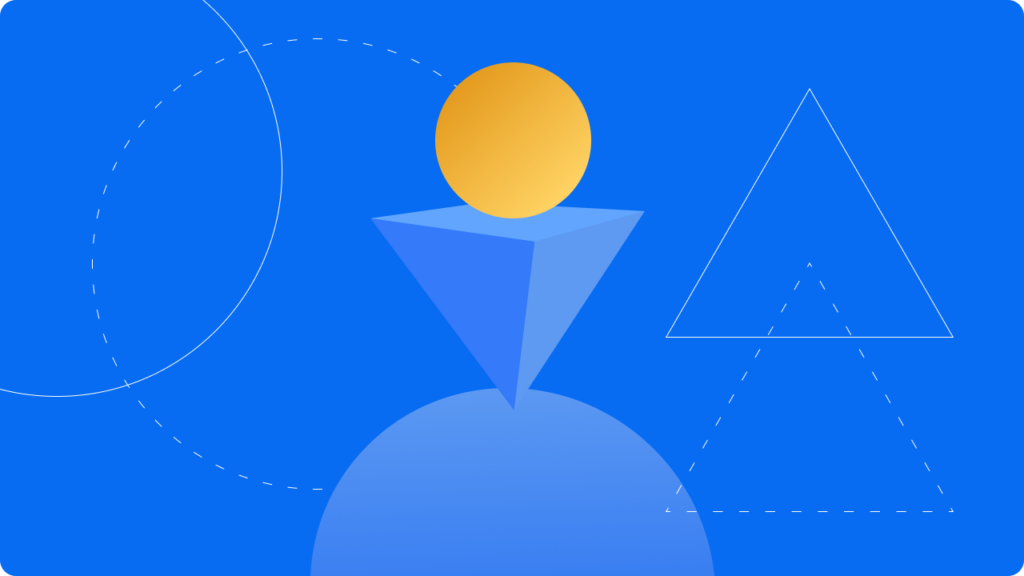Why is brand important to the buyer’s journey?
Branding is so important in catering to your users. It’s also imperative to make sure that you have beautiful assets that support each stage of the buyer’s journey.
Nowadays, most people go through over 50% of their purchasing decisions before ever talking to sales, so it’s important to focus on that journey.
The buyer’s journey is broken down into 3 main stages: awareness, consideration, and decision. It’s important to have relevant assets that support the buyer in each of these stages.
According to CMO Council, 9 out of 10 B2B buyers say online content has a moderate to major effect on purchasing decisions. In addition, a survey by LoSasso showed that 39% of B2B buyers say their purchase decisions are driven most by brand.
The main takeaway from this is that B2B marketers need to be supporting each of these stages with relevant, brand-focused assets. So, what now?
Awareness
An awareness asset should not feel like you’re selling to the user. It should feel like you’re sharing knowledge because you genuinely want to help them.
In the first stage of the buyer journey, your user is experiencing a problem. Here’s an example of what that process could look like:
Situation
“My awesome display ads that were designed 6 months ago are no longer converting like they used to. Why is this happening?”
Action
You Google “ads aren’t converting after 6 months” and find an infographic on display ad best practices
Outcome
After reading the infographic, you might realize “Oh, I should be refreshing my display ads every few weeks to maximize conversions.” And then you might see if there are any other helpful related marketing strategies on the website. Or you might be satisfied with that answer and close the tab (like most users generally do).
If the company is using a retargeting ad campaign, the initial site visit enables them to draw you back to the site and engage further with their brand.
The key to providing valuable awareness assets is first making sure you’ve done the persona research and know your users’ problems.
Once you know that much, it’s important that the information isn’t product-specific, but is high-level and strategy-specific.
By creating a genuine connection between your users and your brand, it gives you more potential for an opportunity down the road.
Examples of Awareness content:
- Infographics
- Social media updates
- Blog posts
- Guides
Consideration
Okay, so your user knows what the problem is. What’s the next step? They may be searching for solutions or strategies they can use to solve their problem.
They may compile pieces of consideration content from several sources. Here is an example of how that may look:
Situation
“I know that I need to refresh my ads, but what approach should I take? How do I make them more attractive and effective for conversions going forward?”
Action
You click on a retargeting ad for an ebook on best ways to create ads that convert
Outcome
After reading through the ebook, you may have a clearer understanding of what approach you want to take for the new set of ads. You may seek out similar educational pieces of content on specific strategies for more effective display ads.
Effective consideration assets go more deeply into solutions that can address your problem, once you realize what that is. They assume that you know that something is wrong and are looking for ways to solve your problem.
Once again, these assets are not product-specific but give info strategies that can help the user once they identify the problem.
Examples of Consideration content:
- Expert guides
- Webinars
- White Papers
Decision
Now that you know which strategy you want to use, you have to figure out how to implement that strategy. In this case, you might be choosing between a freelancer, a design studio, or a marketing agency.
There are pros and cons of each of those options, and part of the decision stage is to choose which option you want to use to put the strategy into action. Here’s what you may be thinking:
Situation
“Alright, I want to get my ads updated. But should I use an option to fix them myself, or hire someone? And what are the pros and cons of each option?”
Action
You search for and find a comparison chart of each option
Outcome
After reading through the comparison chart, you may feel that you want to hire an agency to update the ads. Since you’re not specialized in messaging, designing, or content marketing, you want a group of marketers who have experience at that.
Past this stage, you might be comparing specific vendors, but you know which route you want to take and are ready to buy.
Examples of Decision content:
- Demo videos
- Case studies
- Comparison charts
Key takeaways for connecting brand to buyer journey
After going through the awareness, consideration, and decision stages of the buyer’s journey, your user will be through the core part of the buying process and now has to make a decision.
By putting consistent, helpful content in front of them, there is a chance that they are thinking of you as an option from the positive experience with your brand.
Users are more likely to trust products when they have a consistently positive experience every time they interact with it.
Whether it’s from reading a blog, checking out social media, or receiving an email, it’s important to know your users’ needs and get their feedback. This enables you to provide an experience that makes your target audience feel seen and build on that relationship.
Check out some recent examples of buyer-focused assets we’ve created for our clients.







